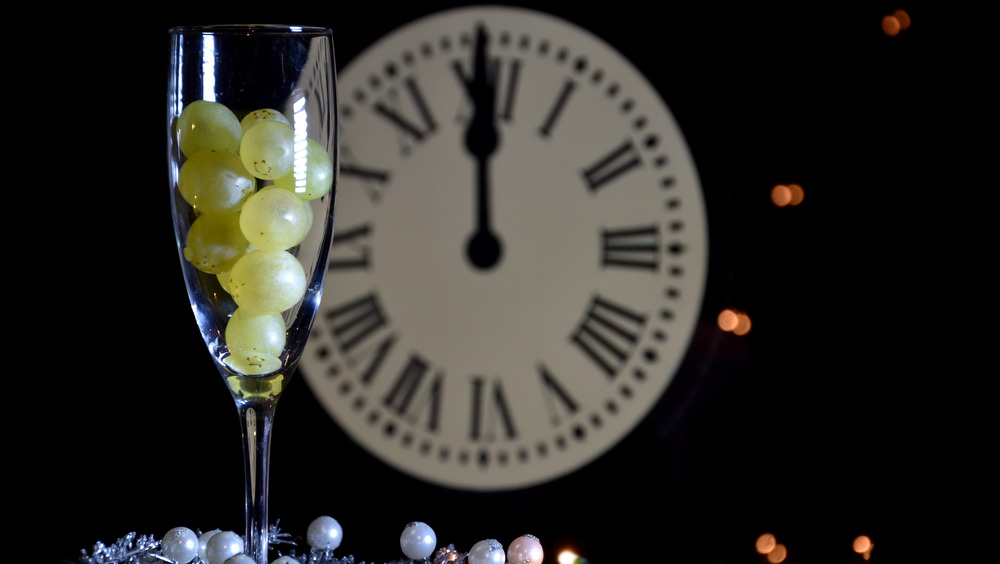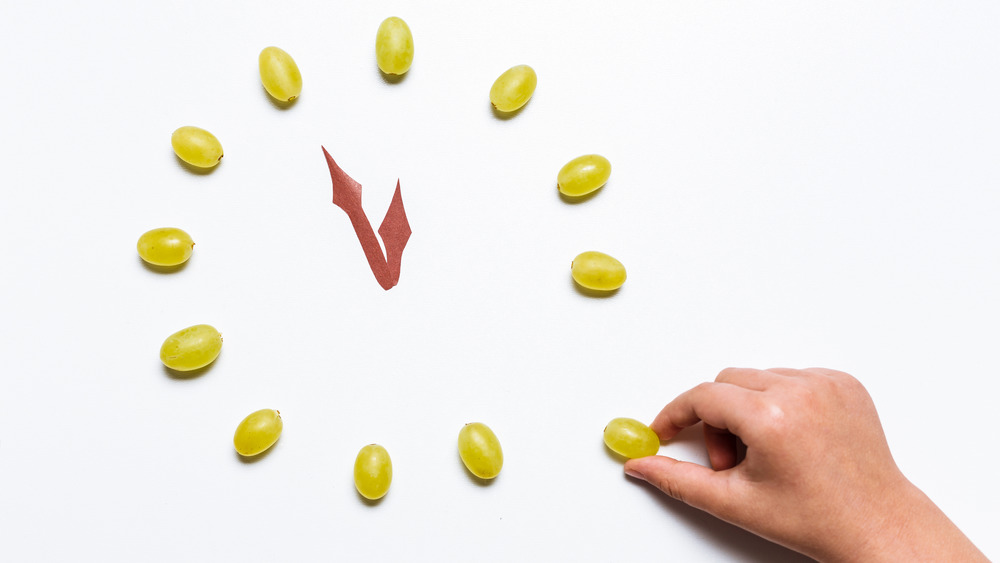The Real Reason People Eat Grapes On New Year's Eve
In many parts of the world, when the clock strikes midnight on New Year's Eve, people will ring in the New Year with fireworks, champagne, and, of course, a kiss with their beau. However, there is precious little time for kissing in Spain, at least at first, because everyone's mouth will be busy with a famous tradition: eating twelve grapes in the first twelve seconds of the new year, per NPR.
For many people, the traditional Spanish celebration of Nochevieja, or "old night," means gathering around the TV, watching the Real Casa de Correos clock tower in Madrid's Puerta del Sol, with twelve grapes at the ready. At the stroke of midnight, the clock emits four quick chimes. Then, a series of twelve chimes begins to ring out, and with each ring, revelers pop a grape into their mouth and rush to get it down. Each grape symbolizes one month of the year ahead, and if revelers are able to swallow all twelve before the last clock bell chimes, then they will have good luck and prosperity the entire upcoming year.
The twelve grapes tradition is over a hundred years old
But that's not as easy a feat as it may first seem, because the most common grape in Spain is a whitish-green Spanish variety called Aledo, which comes with seeds, according to NPR. In order to get the grapes down in time, many people simply swallow them pits and all. Of course, the giggling, laughter, and general good-natured silliness that usually accompanies this tradition can make it hard to swallow, too.
The tradition is over a century old, so its exact origins are unclear. Per Sunset Beach Club, some claim that growers in the Spanish port city of Alicante, who had a surplus crop of grapes in 1909, craftily devised the tradition as a way to sell off their harvest. However, it is more likely the tradition dates even further back, to Madrid in the 1880s. The Madrid bourgeoisie had begun adopting French customs, like consuming grapes and champagne on Dec. 31, according to Atlas Obscura. The working class residents who would flood Puerta del Sol at New Year's began mocking them by eating grapes as part of their celebrations as well, and the practice ended up sticking around for over a hundred years.

